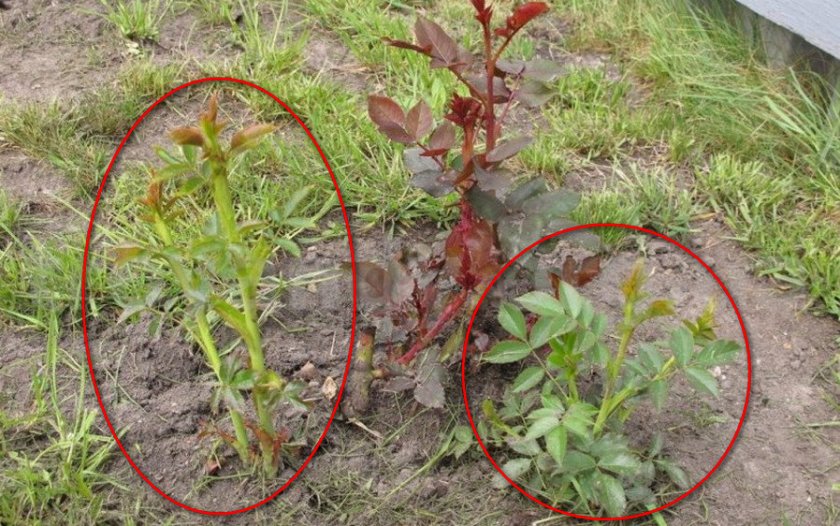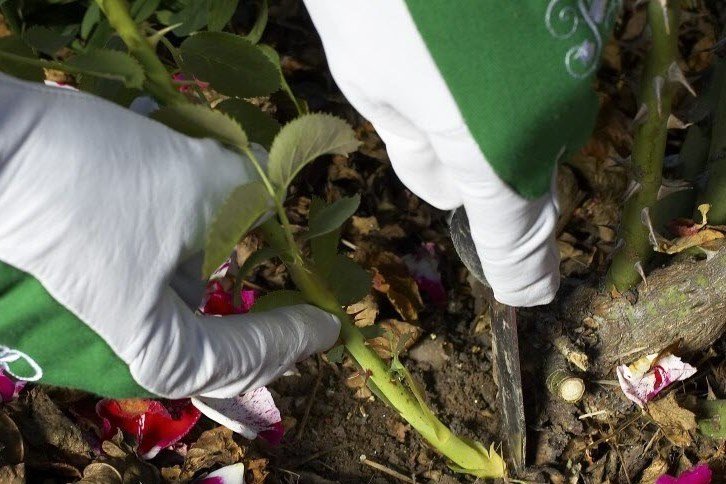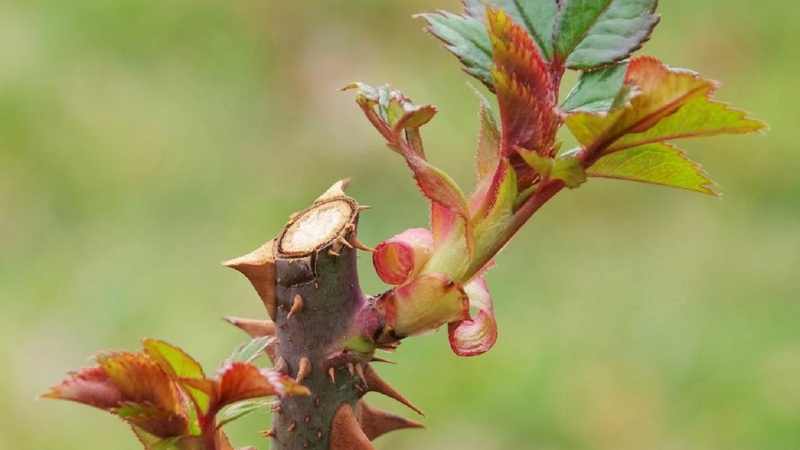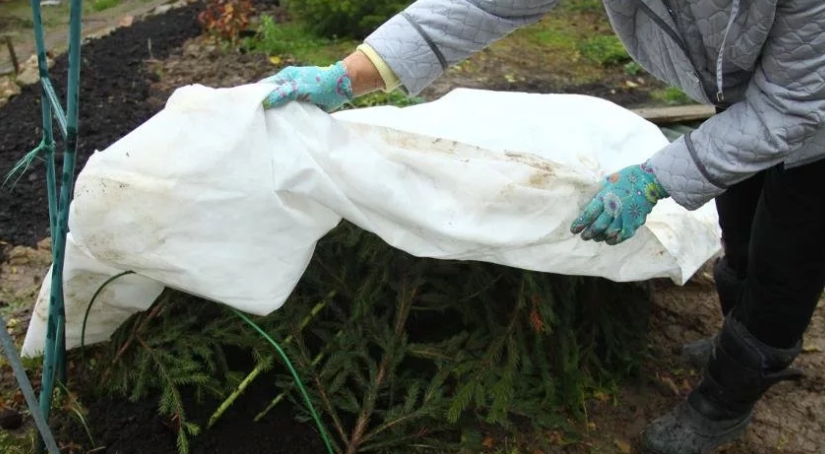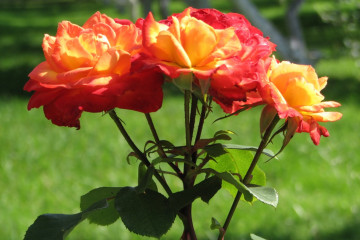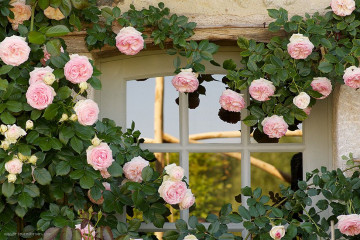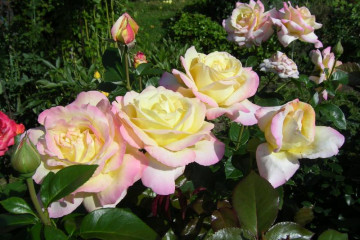Why does a rose turn into a rosehip - how to fix it
Content:
- How to distinguish a rose from a wild rose
- Why does a rose turn into a rosehip
- How to understand that a rose is reborn into a wild rose, the first signs
- How to return the decorativeness of a flower and correct the situation
- What to do to prevent the rose from overgrowing with rosehip branches next year
- What should be the care of a rose so that it does not "decide" to be reborn into the wild
- Further care of the plant
The rosette is a very beautiful plant that belongs to the Rosaceae family and the Rosehip genus. Therefore, flower growers often graft it on a rosehip or pink wildflower bush. But sometimes the roses begin to shrink and be reborn into a grafted bush. Why a rose turns into a rosehip, what to do in this case, will be described in detail below.
How to distinguish a rose from a wild rose
Distinctive features of the color that the buds of the rose and the wild bush have can not always be noticed. If they have a pink color, then it is difficult to identify the plant, especially for a novice florist.
You can reliably find out by the following characteristics:
- Compared to rose hips, the rose has decorative and beautiful flowers with a large number of petals. On a rose hip, their number is standard - 5 pieces.
- After flowering in a wild bush, in place of flowers, fruits appear that have an oval or round shape. Fruit formation on the rosettes is excluded.
- The flowers have leaves of a dark green color, which are characterized by density, leatheriness and rounded tips.
- Flowers have 3-5 leaves on a leafy branch, and a wild bush has 7.
- Roses have young shoots of dark red color, and rose hips have green ones.
Distinctive features can be found in the spikes. In a flower, they are rarely located on the stem and are large in size, and the trunk of a wild bush is densely covered with small thorns.
Why does a rose turn into a rosehip
For propagation of a flower, the cuttings method is often used. Wild rose is an unpretentious plant that has strong taproots and is characterized by resistance to frost and drought. That is why flowers are often grafted into the bushes of this culture. But over time, most novice florists begin to wonder: why does a rose turn into a rosehip?
Reasons for the change in appearance
Despite the fact that the flower is guaranteed to grow when using the method of cuttings and grafting to the rose hips, this plant can run wild. A rose can turn into a rosehip if the grower is illiterate. If he purchased a seedling that has buds below the grafting site, then shoots of a wild bush will go from them. They take nutrients from the flower, as a result of which it dies, and the pink wild grows.
A common cause of rebirth is an incorrectly selected rootstock. Some varieties of the wild bush have aggressive growth, therefore, shoots form from the root system, which quickly overwhelms the cultivated shoots of roses.
If you plant a seedling incorrectly and do not deepen the grafting site, then the scion will quickly weaken and the cultivated plant can turn into a wild game. Rosettes can be reborn in the absence of dressings, the development of diseases of a fungal or viral nature, and pest damage. In this case, the flower dies, and the next year shoots of a wild bush grow from the root system.
How to understand that a rose is reborn into a wild rose, the first signs
The first signs of the transformation of a cultivated plant into a pink wild can be determined in the spring, when light green shoots appear. Florists note the appearance of twigs with an atypical color. They are very thin and have no dark red pigment. The leaves become elongated towards the outer edge, they do not have the gloss characteristic of the flower. When reborn, a growth of a wild bush may appear near the rose bush. If you look closely at the shoots, you can see small needles on the stems.
How to return the decorativeness of a flower and correct the situation
Experienced flower growers tell about what to do if roses have grown into rose hips. When unwanted shoots appear, they are cut off. This will eliminate the possibility of depletion of the rose bush and the loss of its decorative effect.
If you cut or break off the shoots, then the pink wild will go away. It is best to remove the shoots with a pruner, after which you should sprinkle the places of the cuts with activated carbon powder. If more than half of the bush has grown, it is recommended to re-graft the plant.
What to do to prevent the rose from overgrowing with rosehip branches next year
To ensure the full growth of the rose next year, it is recommended to closely monitor all young shoots. If, when viewing, the first shoots of a wild rose were found, then the use of drastic measures is recommended.
Professionals talk about what to do if a rose is reborn into a rosehip, what to do. They recommend cutting young shoots at the root. In this case, you need to ensure that not a single kidney remains. To process the cut site, iodine or garden pitch is used. If the gardener completes this procedure and the shoots grow back, then repeat it. During the growing season, pruning is carried out 2-3 times.
In some cases it is recommended to carry out the procedure next spring If the growth appears at a distance of 70-100 cm from the rosebush, then it must be dug up and cut off at the base. Otherwise, the pink wild will grow at lightning speed.
What should be the care of a rose so that it does not "decide" to be reborn into the wild
In order not to have to return the attractive appearance of the cultivated plant, it is necessary to provide proper care for it immediately after planting. A florist must create all conditions for the flower to receive all the necessary micro and macro elements. Also, the plant needs protection from negative environmental influences.
Proper rose care is as follows:
- Timely removal of weeds that appear around the bush.
- Watering the culture. For this, settled or rainwater is used. In hot weather, the procedure is recommended to be carried out 1-2 times a week.
- In the near-trunk circle, it is recommended to regularly loosen the soil.
- To prevent the spread of diseases in early spring, the rose is sprayed with appropriate means.
- For mulching the soil of the trunk circle, it is recommended to use peat or compost. During the procedure, it is recommended to ensure that the mulching layer is as thin as possible.
- During the season, fertilizing is carried out 3-6 times. For this, mineral fertilizers are used.
- It is recommended to cover the bushes for the winter, which will exclude the possibility of the dying off of the cultivated plant.
- In early spring, the rosette is pruned before bud break.In the fall, it is also necessary to carry out this procedure after the culture has thrown off the leaves.
- Experts advise to regularly examine the bush and identify the shoots of the wild bush in a timely manner. With their early strangulation, the possibility of the death of a cultivated plant is eliminated.
Further care of the plant
The next year, after planting the rose, it is recommended to provide appropriate care for it. In the springtime, it is as follows:
- Removing the shelter. In the first year after planting the rose, as in subsequent seasons, it is recommended to cover it with sawdust, earth, branches, etc. In the springtime, you need to free the plant from insulating materials. This must be done after the snow melts. Otherwise, the flower may stubbornly, as a result of which its stems will rot.
- Pruning. After a week after removing the shelter, pruning is carried out. If the florist is engaged in the cultivation of hybrid tea species, then during pruning, the bush is molded: the inner and also the outer curved branches are cut out, and strong shoots remain. The height of the bush should be 30 cm. Moderate pruning with the removal of crooked and thin branches requires polyanthus and ground cover species. Patio flowers should be at least 40 cm tall after pruning. Miniature flowers are pruned so that 4 to 6 buds remain on each shoot.
- Top dressing. When the buds swell and shoots begin to grow, the plant must be fed. For this, a liquid complex mineral fertilizer is used. Then, after two weeks, organic fertilizing is carried out.
- Disease prevention. If the plant is often attacked by pests, then it is recommended to treat it with special insecticides.
In summer, it is recommended to ensure proper watering of the cultivated plant. The ideal option is to organize an automatic irrigation system. If this is not possible, watering is carried out manually. For this purpose, a garden watering can, a bucket or a hose connected to the water supply is used. It is recommended to pour from 5 to 15 liters of water under one bush. Depending on the weather, you need to water the flowers 1 to 3 times a week.
For the first two summer months, it is recommended to mulch the bushes. Sawdust, humus, peat or bark should be spread around them, which will ensure the preservation of soil moisture and the supply of nutrients to the root system. Experts advise to organize periodic renewal of mulch, as it is washed out by water.
To ensure abundant flowering, it is recommended to regularly remove the faded buds. In the summer, the flowers also need feeding using dry granular fertilizers. The granules are simply scattered under the bushes.
In the fall, the plants must be prepared for wintering. During this period, watering is reduced, and the soil loosening is also stopped. In order to avoid damage to the plant by pests, the crop is treated with insecticides.
Before the onset of frost, it is necessary to prepare a shelter for the plant. For this, compost, earth, peat, sawdust are used. The height of the shelter should be 25-30 cm. If the flowers are grown in a harsh climate, then coniferous branches should be placed on top. When plants are sensitive to cold, pine spruce branches or agrofibre are used for shelter.
In August-September, flower growers recommend feeding plants using phosphorus-potassium fertilizers. Care must be taken that they do not contain nitrogen, as it stimulates the growth of the culture. To strengthen the flower and facilitate wintering, it is advised to use fertilizers, which include phosphorus and potassium.
Some growers cut flowers in autumn, and a second group of flower lovers argue that this procedure should not be carried out. Therefore, the owner of the roses can do this at their own discretion.
Experts talk about why the rose was reborn into a rosehip and how to fix this situation. The main actions in this case: pruning the shoots of a wild bush, as well as providing full care for the crop.

